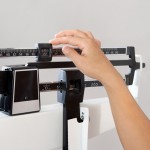Why do so few patients use patient portals?
When it comes to the benefits of electronic health records, access to patient portals is one of the most significant. With an array of advantages for both physicians and patients, many would think that patients would be more interested in using them.
However, a recent survey performed by Xerox in September asked 2,017 adults throughout the U.S. about their experiences with patient portals, finding that an alarming 35 percent of participants did not know such a tool was available to them. Perhaps this is because a mere 31 percent reported that their doctors had never informed them of the portal.
A desire to learn
Although the survey showed that 64 percent of adults throughout the country do not currently use a patient portal, this does not mean that they do not want to. In fact, 54 percent expressed an interest in learning how to use one and benefiting from its accessibility and convenience.
If doctors informed their patients of how to access their portals online, patients would be more in tune with their current health status.
"With providers facing regulatory changes, mounting costs, and patients who increasingly seek access to more information, our survey points to an opportunity to address issues by simply opening dialog with patients about patient portals," said Tamara St. Claire, chief innovation officer of commercial health care for Xerox.
The education of patients will encourage them to become active participants in their own health and care. This would also assist physicians in highlighting how EHRs are being used in a productive way while adhering to meaningful use standards.
A generation gap
When the survey took age into account, the findings showed that answers varied depending on how old each participant was. For example, baby boomers, aged 55 to 64, communicated the most significant desire to use a patient portal. Of all the patients surveyed, they were also the most active users of these portals, while younger generations preferred access to data through smartphones and tablets.
Each generation also expressed different ideas on how they would like to use patient portals. While older adults said they would want to use them for scheduling appointments, refilling prescriptions and emailing their doctors, younger patients wanted a portal that is personalized with their detailed information, care plans that have been tailored to their needs and even related industry news.
How can patients benefit?
Effective EHR systems come with a patient portal that allows people to see details regarding their most recent doctor's visit and any notes or medication prescribed during that appointment, according to HealthIT.gov. This is crucial to a successful understanding of one's health and even any health risks.
It is not uncommon for patients to leave an appointment without the proper clarity required in enhancing their health or understanding how their medications are improving their health conditions. This uncertainty is drastically reduced when patients have access to all the information they need, including discharge summaries.
Lab results and charts are available much faster than they are when distributed through the mail. Some of the most effective EHRs have portals that also allow patients to make payments online and fill out important forms that they otherwise would have had to complete at their appointment. These features also benefit physicians and practices, increasing workflow, as tasks such as mailing paper documents and bills are no longer required.
Therefore, the problem with patient portals is not caused by a lack of interest or an inefficient system, but rather of physicians' failure to properly inform their patients of the portal's availability to them. Once people know more about the portals and how to use them, the number of users is likely to soar.



